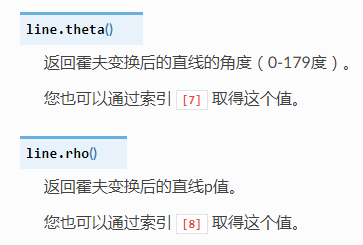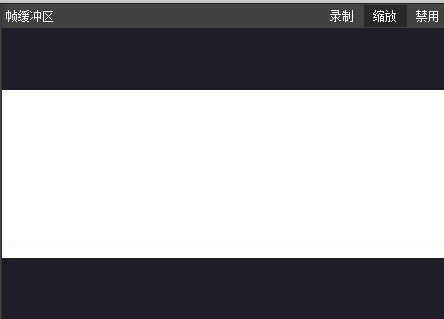
get_regression和find_lines是不是都可以得到image.line对象?

假如调用get_regression得到image.line对象,返回的这两个值是什么方法得到的呢?是先线性回归然后霍夫变换?
be4y 发布的帖子
-
RE: image.get_regression函数得到的直线是线性回归得到的还是霍夫变换得到的?发布在 OpenMV Cam
-
image.get_regression函数得到的直线是线性回归得到的还是霍夫变换得到的?发布在 OpenMV Cam

文档中是通过最小二乘法或者Theil-Sen线性回归算法得到直线,但其得到的直线对象line.theta()line.rho()是由霍夫变换得到的,请问线性回归和霍夫变换是冲突的吗?他们之间是什么关系呢? -
为什么用histogram.get_threhsold()函数自适应帧缓冲区是一片空白呢发布在 OpenMV Cam
回复: 使用“histogram.get_threhsold()”函数后怎么传给“ img.binary”
import sensor, image, time
sensor.reset()# 初始化
sensor.set_vflip(True)#垂直方向翻转
sensor.set_hmirror(True)#水平方向翻转
sensor.set_pixformat(sensor.RGB565)# 设置像素模式 RGB565
sensor.set_framesize(sensor.QQQVGA) # 设置图像大小 80x60 (4,800 pixels)
sensor.set_windowing([0,30,80,30]) #设置窗口ROI,在要处理的图像中提取出的要处理的区域
sensor.skip_frames(time = 2000) # 跳过一些帧,等待感光元件变稳定,使新设置起作用
clock = time.clock()while(True):
clock.tick()
img = sensor.snapshot()
#print(clock.fps())
histogram = img.get_histogram()
Thresholds = histogram.get_threshold()
l = Thresholds.l_value()
a = Thresholds.a_value()
b = Thresholds.b_value()
print(Thresholds)
img.binary([(0, l), (-128,a),(-128,b)])